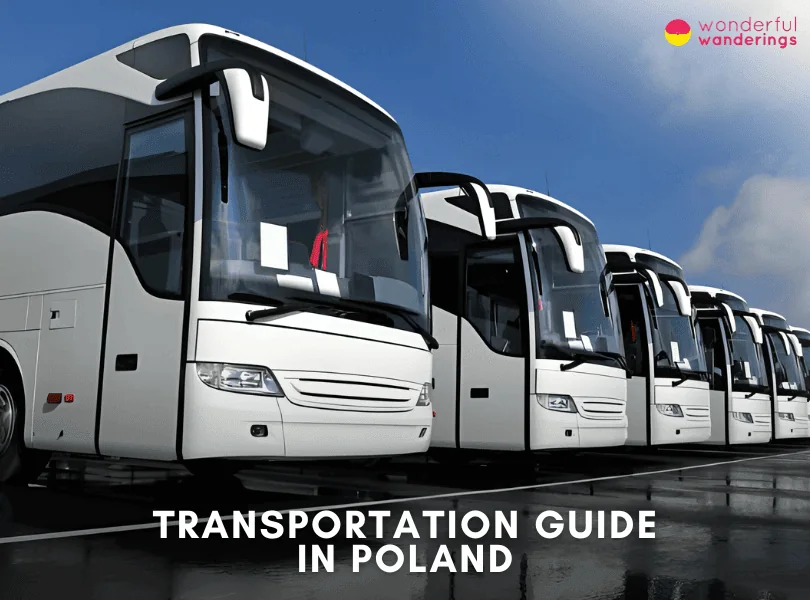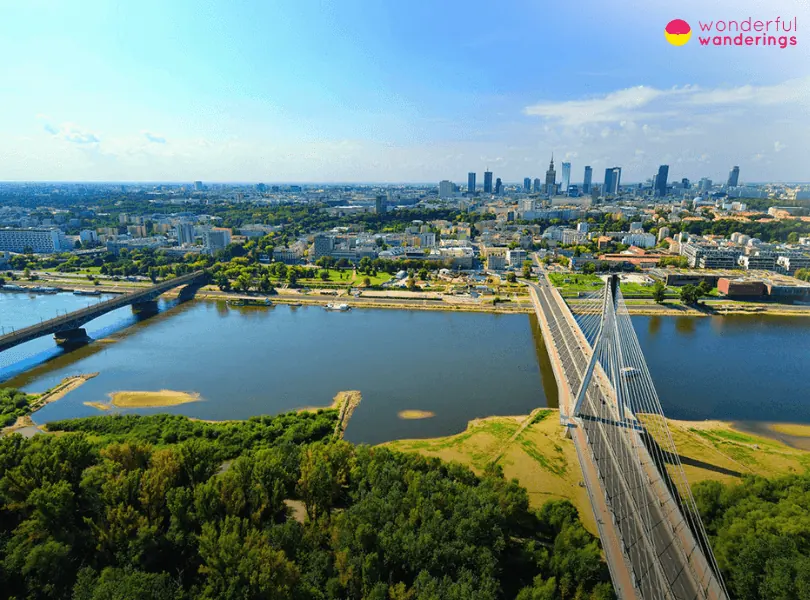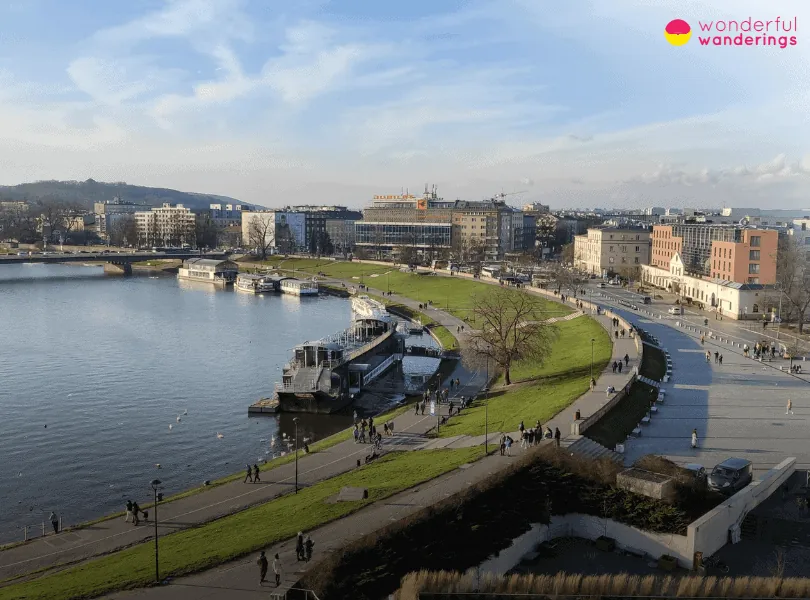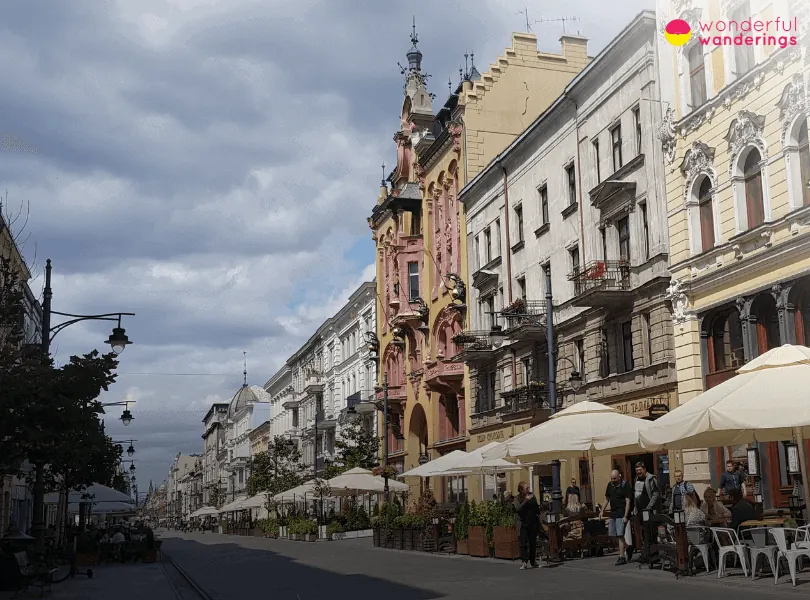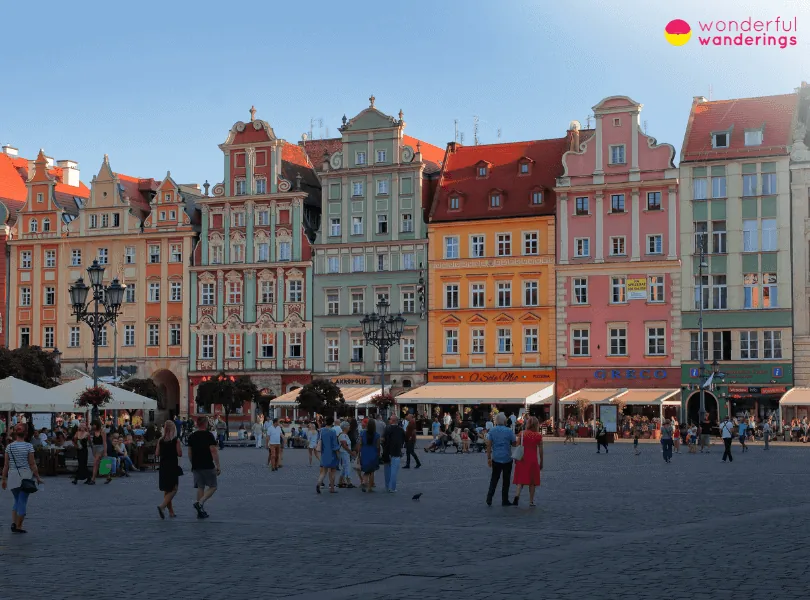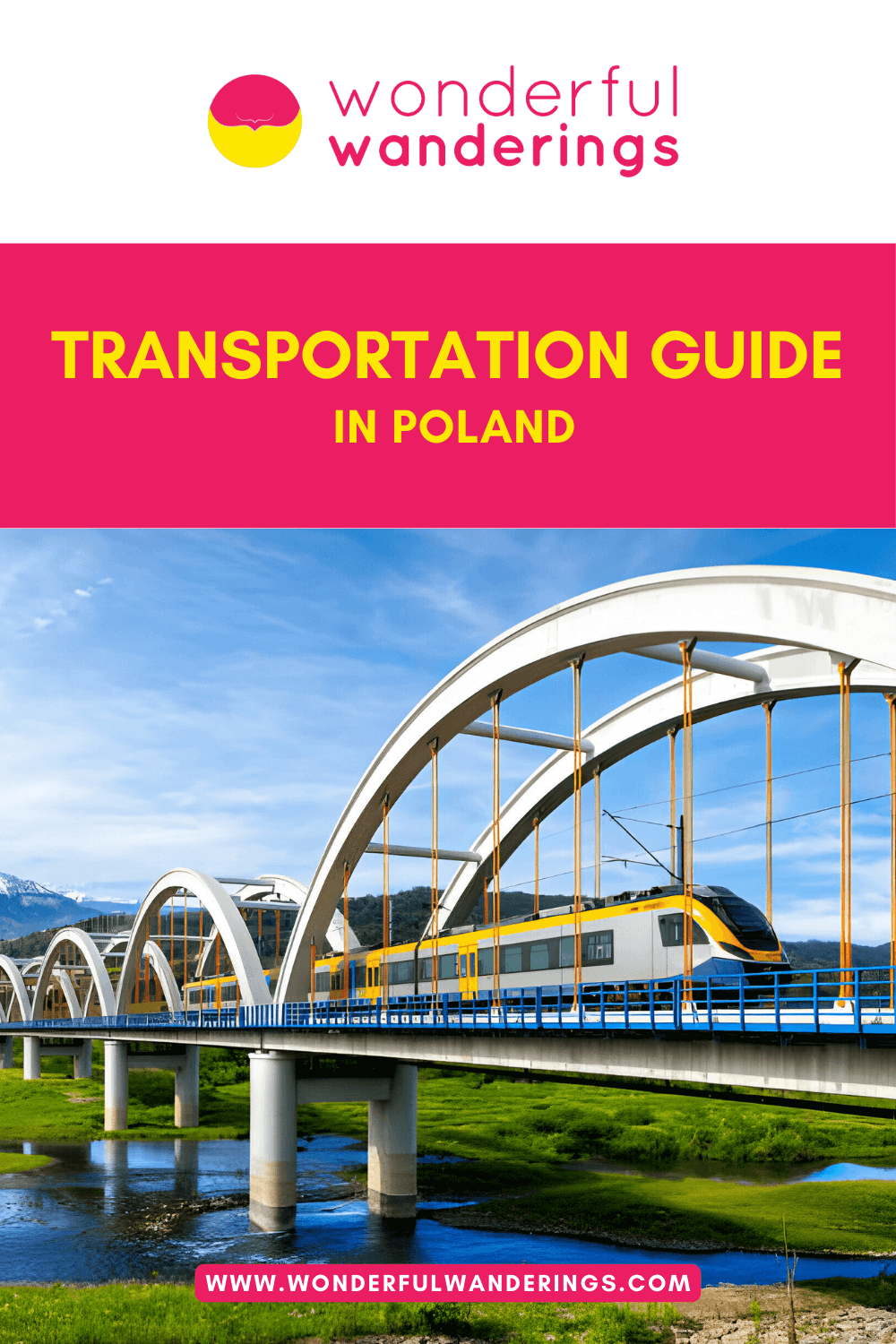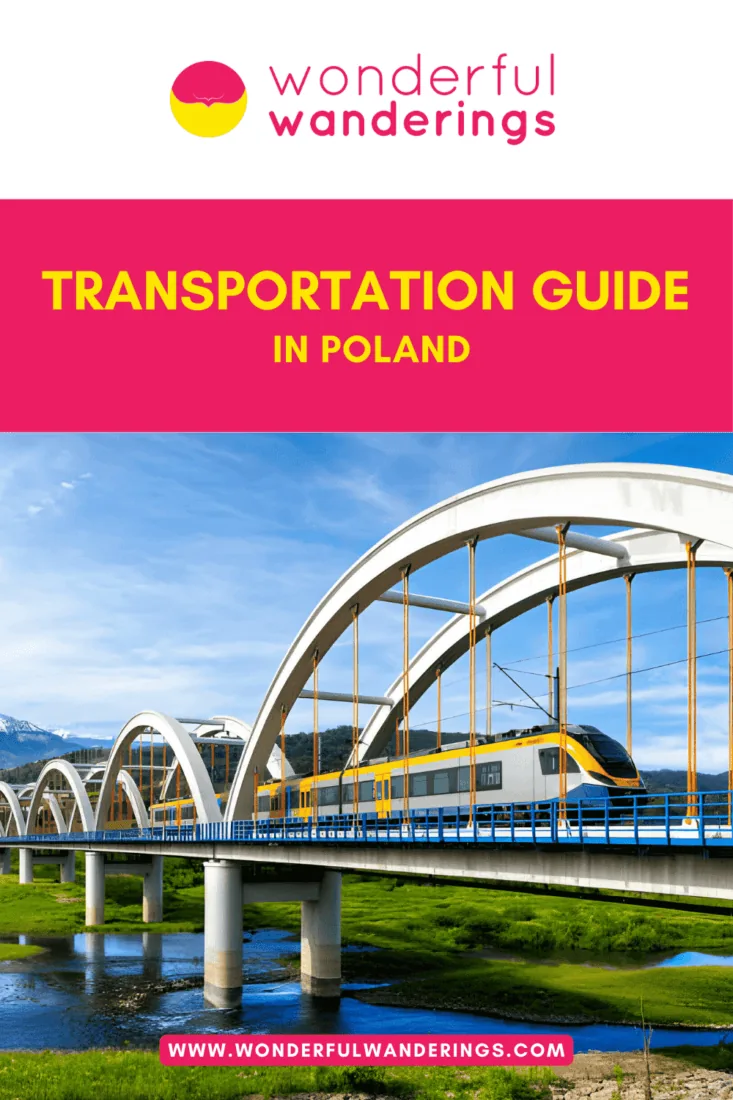Poland is a Central European country bordered by Germany, the Czech Republic, Slovakia, Ukraine, Belarus, Lithuania and Russia. Travelers planning to reach Poland can opt for flights landing at major airports like Warsaw Chopin Airport and Warsaw Modlin Airport. Once in Poland, different transportation options are available for getting around. From the airport, private transfers are arranged to the city. The country has a comprehensive public transit system, including trains, trams and buses. The Polish train system, operated by PKP, is a popular travel choice between Warsaw, Gdansk and Poznan. For local travel within cities, trams and buses provide convenient connections. Driving in Poland requires caution due to high traffic fatalities. For maritime travel, ferries operate from Poland to Sweden and Denmark.
Where is Poland located?
Poland, officially known as the Republic of Poland, is in Central Europe. It covers an area of 312,679 square kilometers (120,728 square miles) making it the 9th largest country in Europe. The land is characterized by diverse geographical features, including forests, rivers, plains and mountains. The country has a rich history dating back to the late 10th century and has experienced periods of prosperity and adversity. Poland’s transition into a market-based democracy and membership in the European Union and NATO have marked its position in the 21st century. The country is also known for its cultural heritage, historic cities and architectural landmarks, making it a popular tourist destination.
Polish use various transportation modes to move from one place to another. The country has a well-developed transportation infrastructure, including a network of roads, railways and air travel. Public transportation such as buses, trams and the metro is commonly used in urban areas. Cities like Warsaw and Krakow have extensive public transit systems that make commuting convenient for residents. Cycling is popular, with many cities having dedicated bike lanes and rental services. The railway network is efficient and connects major cities. Poland has several international airports, facilitating domestic and international air travel. The road network is extensive and many people use cars for personal transportation and travelers may utilize a Poland travel guide. The transportation options in Poland are diverse and cater to the needs of the local population.
How to get to Poland?
Poland transportation offers different options for visitors and travelers. Air travel is facilitated by airlines like LOT Polish Airlines, providing international flights and domestic connections to various Polish cities. Train travel is another popular choice, with the Polish train system praised for its convenience and affordability. The national railway company PKP operates several train types, including InterCity, Twoje Linie Kolejowe (TLK) and POLREGIO, offering services between major cities like Warsaw, Gdansk and Poznan. Bus travel is extensive, with services like Flixbus connecting many cities nationwide. Public transport networks offer buses, trams and metro lines for local travel within cities like Warsaw. Boat travel is an option in certain areas, although it is less common than the other modes of transportation. It is important to note that while road travel is possible, Poland has one of the highest road fatalities rates in the EU, so caution is advised.
How many airports are there in Poland?
Poland has 15 civilian airports, the largest and most developed one being Chopin Airport in Warsaw. The country’s airports are well-connected, providing good quality service for domestic and international flights. Other important airports besides Warsaw include Krakow and Katowice, which are ideal for travelers to Malopolska, Silesia and Podkarpacie. The airport of Mikołaj Kopernik in Wroclaw provides connections for Lower Silesia, the Opole region and the west-south side of Poland. In the north, the airports in Szczecin and Gdansk provide an ideal connection to the coast. These airports are connected with major cities in Europe and through hub airports with cities around the world. The development of airports and subsequent air connections make Poland more and more attractive for tourists, with every important tourist city having a good connection to the nearest airport.
The best transportation options for visitors to ride from the airports in Poland include buses, airport shuttle services, taxis and driving or rental cars. Firstly, buses are a convenient mode of transportation from the airports. Many airports have well-organized bus services that connect to various parts of the cities, providing an affordable and efficient way to reach the city center and other destinations. Secondly, airport shuttle services are widely available at Polish airports, offering door-to-door transportation to hotels and other key locations. These services provide a hassle-free and comfortable transfer option for visitors, especially those carrying heavy luggage or traveling in groups. Thirdly, taxis are readily accessible at the airports and are a popular choice for travelers who prefer direct and flexible transportation. Taxis provide convenience and privacy but are more expensive than other transport modes. Fourthly, driving or renting a car is a viable option for visitors who prefer the freedom of having their vehicle. Several well-known car rental companies operate at the airports, offering a range of vehicles to suit different needs.
What type of transportation can you choose to get around Poland from the airport?
Listed below are the types of transportation visitors can choose to get around Poland from the Airport.
- Bus. Buses offer an economical way to travel from the airport. A one-way ticket from Warsaw Chopin Airport to the city center costs €1 ($1.13, £0.85). Buses often have fewer stops than trains, making them a quicker option; however, buses do not provide direct service to the final destination, requiring additional transfers. They are crowded and the lack of a comprehensive bus network can make planning challenging.
- Taxi. Taxi provides a direct and convenient way to reach your destination from the airport. A taxi ride from Warsaw Chopin Airport to the city center costs €9 ($10.17, £7.65); however, taxis are more expensive than public transportation, language barriers pose a challenge and there is a risk of overcharging if the meter is not used.
- Rental Car. Renting a car provides an exploration of Poland at one’s own pace. The average daily rental cost is €30 ($33.9, £25.5); however, unfamiliarity with local driving rules and conditions poses challenges. Parking is difficult in city centers and the cost of fuel, which is €1.30 per liter ($5.87 per gallon, £4.41 per gallon), adds to the overall expense.
- Bicycle. Bicycle offers an eco-friendly and healthy way to get around. Warsaw has a public bike system with a one-day pass costing €1 ($1.13, £0.85); however, carrying luggage on a bike is demanding and the weather may not always be conducive to cycling. Not all areas in Poland have dedicated bike lanes, which can make cycling less safe.
- Ferry. Ferry transportation is not a common mode of transportation in Poland, as the country is landlocked and does not have direct access to the sea. Visitors can travel to the Polish coast and take ferries to nearby countries such as Sweden, Denmark and Germany. The port city of Gdansk is a popular destination for tourists, with its historic Old Town and access to the Baltic Sea. Ferry transportation is not a primary mode of transportation in Poland.
Why is riding a bus in Poland economical and environmentally friendly?
Bus transportation in Poland offers an economical and environmentally friendly mode of travel. The extensive network of local, regional and national carriers, including private minibus services, ensures affordability and accessibility to almost all points in the country. Tickets can be purchased conveniently at kiosks, vending machines or sometimes on the bus. The environmental benefits of bus transportation in Poland are significant, with efforts to implement electromobility in public transport, reducing environmental pollution and contributing to climate change mitigation. Cities like Krakow have invested in low-emission, low-floor buses, including hybrid and electric models, which are comfortable and meet high emission standards. Using eco-friendly vehicles in public transport is part of Poland’s commitment to developing ‘green’ public transportation and encouraging local society to switch from cars.
Why should you consider taxi rides for short trips in Poland?
Taxi rides in Poland are a convenient and economical solution for short trips, particularly for solo travelers. Taxis in Poland adhere to strict safety regulations, including regular vehicle inspections and driver certifications for a secure passenger journey. The fares are generally affordable, with the option to secure discounted rates when booking in advance. Taxi services in Poland are easily accessible through popular apps like Uber and Bolt, providing transparent fare calculations and direct contact with drivers. These apps operate in major Polish cities, offering high control over routes and prices. Taxis can be a stress-free alternative to navigating unfamiliar roads or parking issues. Visitors should choose reputable taxi companies to avoid overcharging, especially for tourists.
Why rental cars are the best option to go around Poland, especially for the family?
Car rental in Poland is a flexible, convenient and cost-effective solution for families to explore the country’s landscapes and cultural attractions. The car rental market in Poland is competitive, with options ranging from economy to luxury vehicles, catering to different budgets and needs. Renting a car lets families travel at their rate, without the limitations of public transportation schedules and reach remote areas. Many car rental companies in Poland permit one-way rentals, allowing travel nationwide without returning to the pickup location. Rental cars in Poland must have third-party liability insurance, providing coverage for potential damages or injuries; however, it is best to check the insurance details before renting, as additional coverage might be beneficial for peace of mind. Rental car prices in Poland are affordable, with options available from as low as €5 ($5.60, £4.20) per day, considering additional costs like fuel, which costs €1.25 ($1.40, £1.05) per liter. The convenience, flexibility and the opportunity to explore Poland extensively make car rental a preferred option for families.
Why should you try to take the ferry in Poland?
Taking the ferry in Poland presents a unique travel experience, combining affordability, comfort and a range of onboard attractions. Poland’s ferry services, like those provided by Unity Line, Polferries, TT-Line and Stena Line, offer competitive fares, particularly in promotional periods. The ferries are well-appointed, with comfortable interiors and different onboard amenities. The journey offers to purchase goods at duty-free shops. The ferry routes connect Poland with several Scandinavian countries, convenient for travelers. The fastest ferry crossing to Poland is 6 hours, providing a quick and efficient travel mode. Ferries in Poland are pet-friendly, allowing passengers to bring their pets onboard with certain ferry companies. The ferry journey provides a unique perspective on the country’s coastal cities, like Gdańsk.
Who would consider a bicycle as transportation to go around Poland?
Poland’s residents and tourists consider bicycles a transportation mode, given the country’s well-developed cycling infrastructure and the government’s active promotion of cycling as a healthy and environmentally friendly alternative to motorized transport. Cycling lovers find Poland’s roads suited for biking, with dedicated bike lanes in cities and scenic routes in rural areas. The country’s flat terrain in the northern and central regions further facilitates cycling; however, the hilly southern region might pose a challenge for less experienced cyclists.
What are the big towns in Poland?
Warsaw, the capital and largest city on the Vistula River, has a modern urban landscape with skyscrapers, glass buildings and an extensive public transportation system including metro, buses and trams. Krakow, the second largest city on the Vistula River, is an important historical and cultural center with high integrity and authenticity in its medieval layout and historic fabric. It is served by an airport and efficient public transit of buses and trams. Lodz is the third largest city known for its 19th-century industrial architecture and cultural scene. It is home to universities, museums, an airport and a comprehensive transport network of buses, trams and railways. Wroclaw, the largest city in Silesia with a thousand-year history, features numerous landmarks like the Cathedral and Town Hall. The city is ranked among the most livable places and has an international airport, a major railway station and a public system of buses and trams.
1. Warsaw
Warsaw is the capital city of Poland, located in east-central Poland, 300 kilometers (190 miles) from the Baltic Sea and 260 kilometers (160 miles) from the Carpathian Mountains. The city straddles the Vistula River and is located in the heartland of the Masovian Plain, with an average elevation of 100 meters (330 feet) above sea level. Warsaw is the largest city in Poland and the city’s urban landscape is one of modern and contemporary architecture, with many skyscrapers and glass buildings towering above older historical edifices. The city has an extensive public transportation system, including buses, trams and a metro system with 36 stations and a length of 38.3 kilometers. The city is the administrative center of the Mazowieckie województwo.
Warsaw is served by the Warsaw Frédéric Chopin Airport, located in Okęcie, south of the city center. The distance from the airport to the city center is 10 kilometers (6.2 miles). The city offers a public transportation system, including buses, trams, urban railways and the Warsaw Metro. The metro system of Warsaw has 39 stations and still expanding. The city has an extensive network of roads and expressways. The most efficient ways to navigate Warsaw are on foot or using the public transport system, which is both fast and inexpensive.
2. Krakow
Krakow is the second-largest city in Poland, on the Vistula River and has a rich historical and cultural significance. The city’s most important elements include Wawel Hill with its castle and cathedral, the medieval urban layout and the historic fabric of Krakow and Kazimierz. The city has high integrity and authenticity, retaining its historical stability and pervading authenticity in location, setting, forms, designs, materials and uses. The city covers an area of 326.8 square kilometers (126.2 square miles), within a 100-kilometer (62-mile) radius of its center.
Krakow is served by the Kraków-Balice John Paul II International Airport, located 11 kilometers (7 miles) west of the city center. The airport offers various transportation options to the city, including taxis, buses and trains. The best transportation around Krakow includes an extensive network of buses and trams, which are efficient and cover most city areas. The city center is compact and can be explored on foot, making walking convenient for getting around and experiencing Krakow’s historical and cultural attractions.
3. Lodz
Lodz, also written as Łódź, is the third-largest city in Poland and the capital of the Łódź Voivodeship. It is known for its rich industrial history and cultural scene. The city covers an area of 293 square kilometers (113 square miles) and is a significant cultural educational center, home to several universities, museums and theaters. The city’s historical significance is reflected in its well-preserved 19th-century industrial architecture, which has been repurposed for modern use. The city is divided into 36 districts with unique characters and attractions.
Lodz is served by Lodz Wladyslaw Reymont Airport, located 6 kilometers (4 miles) from the city center, providing domestic and international flights to destinations in Europe, including Turkey. Lodz features an extensive public transportation network, with 58 bus routes and 19 tram lines operated by the Municipal Transport Company. The city has a well-developed railway system, with long-distance and regional train stations, offering convenient travel options within and beyond the city. Lodz provides 193 kilometers (120 miles) of bicycle routes, making cycling a popular and eco-friendly way to navigate the city. The transportation infrastructure in Lodz caters to the diverse needs of its residents and visitors, offering convenient access to the city center from the airport and efficient mobility within the urban area.
4. Wroclaw
Wroclaw, known as Breslau, is in southwestern Poland and is the largest city in the historical region of Silesia. The city has a rich history of over 1,000 years. It has been part of various states and empires, including the Polish Kingdom, the Bohemian Crown, the Habsburg Monarchy, Prussia and Germany. The city is known for its numerous historical landmarks, including the Wroclaw Cathedral, Wroclaw Town Hall and the Centennial Hall, a UNESCO World Heritage site. The city is often featured in lists of the most livable places in the world and was ranked 1st among all medium and small cities by Eurostat in 2021. The city covers an area of 292.81 square kilometers (113.05 square miles), with a metropolitan area covering 3,627 square kilometers (1,400 square miles). It lies on the banks of the Oder River in the Silesian Lowlands, 40 kilometers (25 miles) from the Czech border to the south.
Wroclaw is served by the Wroclaw Nicolaus Copernicus Airport, located 10 kilometers (6.2 miles) southwest of the city center, which handles domestic and international flights. Wroclaw has a major railway station, Wroclaw Glowny, the largest railway station in Poland by the number of passengers served and a well-developed public transportation system comprising bus and tram networks operated by the Municipal Transport Company. The city’s public transport system provides convenient and efficient options for getting around and exploring the various attractions and cultural landmarks of Wroclaw.
When is the best time to visit Poland?
The best time to visit Poland is between May and October, with spring and autumn offering the most pleasant conditions. These seasons provide agreeable weather and fewer crowds, ideal for outdoor activities like hiking, kayaking and wildlife spotting. May is particularly favorable, with pleasant temperatures and lots of sunshine. Autumn, especially October, is memorable for its golden landscapes and crisp sunshine. Summer is ideal for beach visits and tends to be crowded. The specific best time depends on the activities visitors are interested in. Winter sports lovers might find late winter the best time to visit. Poland experiences a typical European continental climate with four seasons, including cold winters and hot summers.
How is driving in Poland?
Driving in Poland requires adherence to specific rules and awareness of road conditions. Polish roads are right-hand drive and the country has strict drunk driving laws, allowing only 0.2 milligrams of alcohol per milliliter of blood. Seatbelts are mandatory for all occupants in the car and headlights must be used all year long. The speed limits vary depending on the road type, with a maximum of 140 kilometers (87 miles) per hour on highways. The condition of roads in Poland can be challenging, especially in rural areas. Main highways are well maintained, but country roads are often narrow, poorly lit and filled with pedestrians, cyclists, tractors and horse-drawn vehicles. Visitors driving in Poland should avoid these roads if possible. Poland has many heavy vehicles due to its role as a major route across Europe, making driving particularly hazardous.
Can you rent a car in Poland?
Yes, you can rent a car in Poland. Numerous car rental companies operate in the country, including Sixt, Alamo, National, Enterprise, Green Motion and Hertz. Car rental costs in Poland vary, starting from as low as €4.48 ($5, £3.75) per day and the average rental car cost is €23.2 ($26, £19.5) per day. Drivers under 25 may be subject to a surcharge and an international or EU driving license valid for six months is required. Gas prices in Poland are €1.18 ($1.40, £1.05) per liter or €2 ($2.38, £1.79) per gallon. Poland offers attractions, from historic landmarks to impressive mountains, making car rental a convenient option for exploring the country at your own pace.
Do rental cars have insurance?
Yes, rental cars in Poland do have insurance. A rental vehicle must have third-party liability and fire insurance coverage. This insurance is in all rental rates. Collision Damage Waiver (CDW) and theft protection are included in the rental rates; however, renters may purchase additional Full Protection insurance, saving them up to 50% compared to the rental company’s insurance. This Full Protection insurance equals an Excess Waiver plus Roadside Assistance with a $0 deductible excess. It is important to note that there may be restrictions on luxury car categories and travel in certain countries due to insurance regulations.
Are the bus fares in Poland cheaper than renting a car?
Yes, bus fares in Poland cost less than renting a car. Poland’s public transportation, including buses, offers affordable rates. A one-way bus ticket in Warsaw costs €0.90 ($1.01, £0.76), while a monthly pass is €26 ($29.3, £22). Car rental prices start from €20 ($22.6, £17) per day, excluding fuel and parking costs. Buses present a more economical option for budget-conscious travelers. The fuel, tolls and insurance associated with car renting contribute to its higher expenses. Utilizing the well-priced bus services is a favorable choice for travelers looking to minimize transportation costs while in Poland. It is important to consider such factors when planning travel within the country to make informed and cost-effective transportation decisions.
PIN FOR LATER
Find below our best travel guides about Poland.

